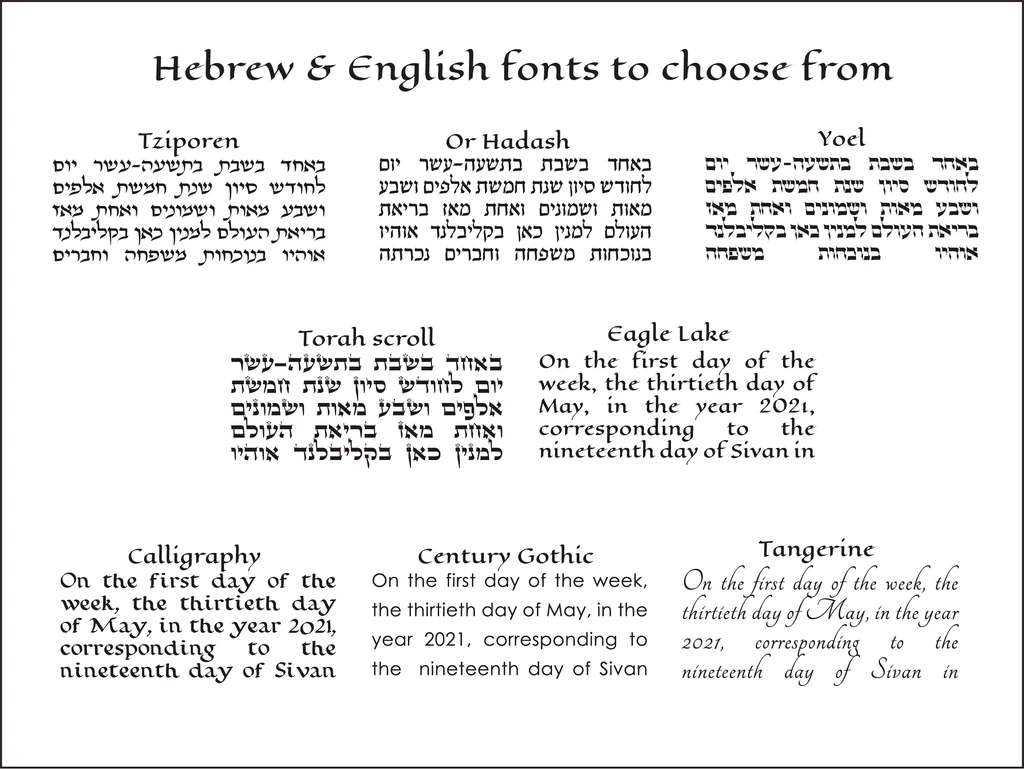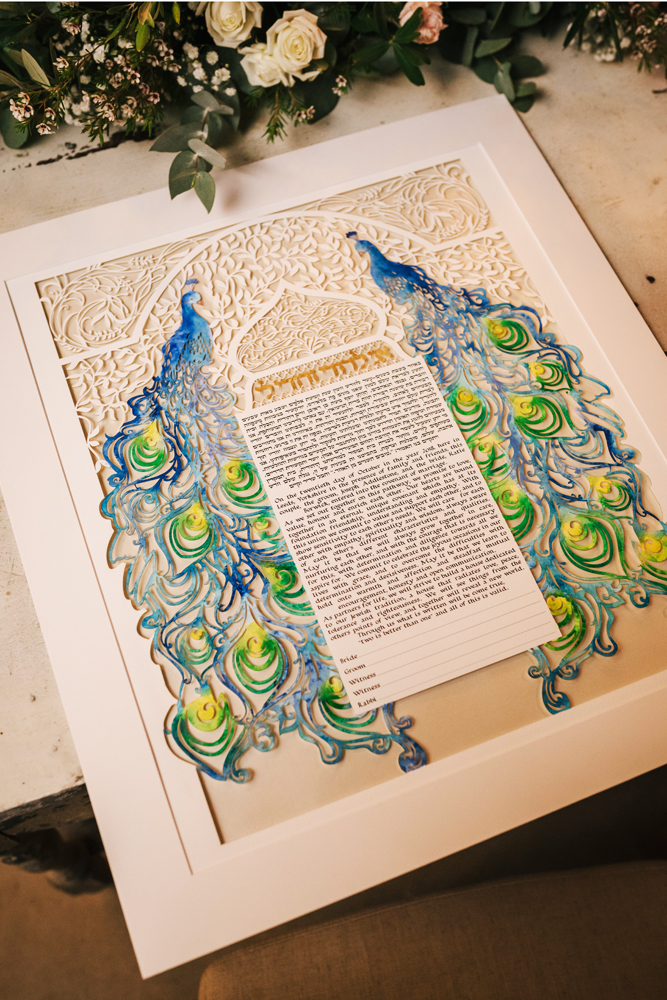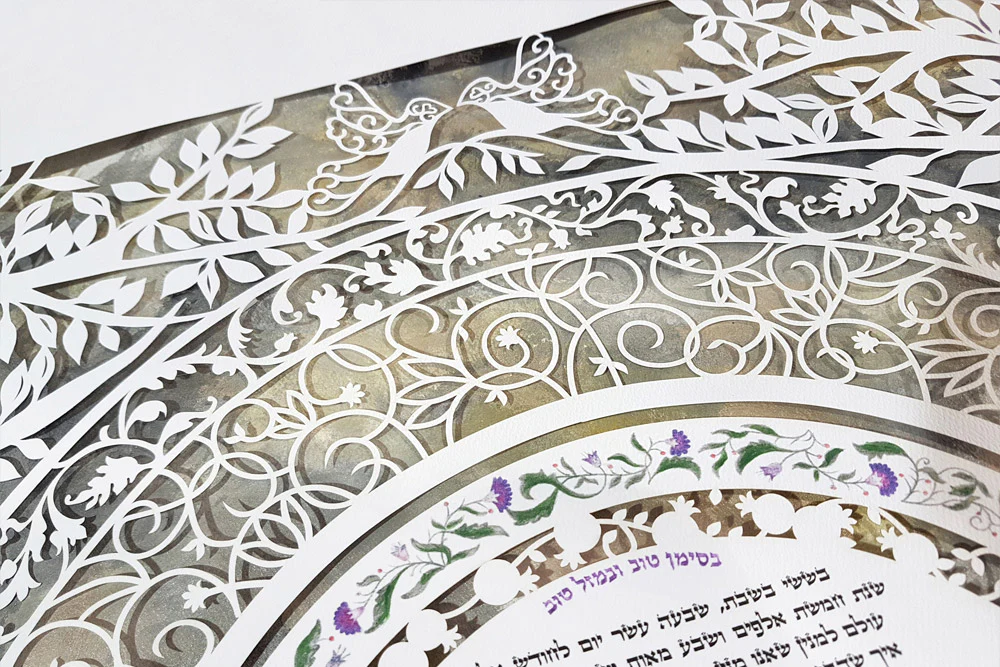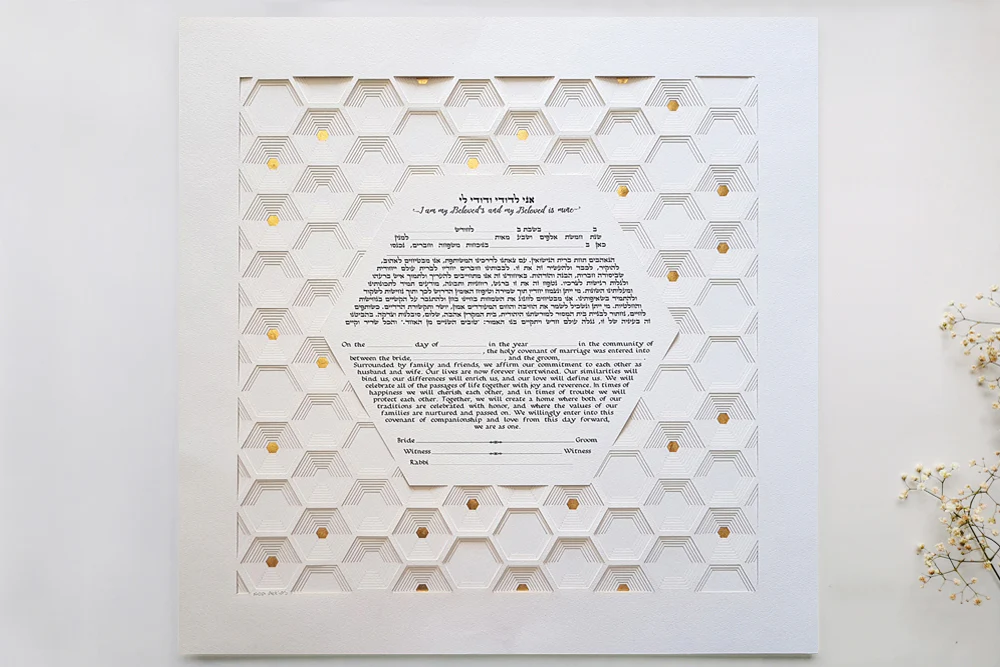This guide aims to provide a comprehensive understanding of Ketubah texts for interfaith couples. It explores the significance, customization options, and the inclusion of religious and cultural elements that respect and honor both traditions. The guide serves as a resource for interfaith couples planning to incorporate a Ketubah into their wedding ceremony.
Understanding the Ketubah: What is it?
The Ketubah is a foundational document in Jewish tradition that outlines the rights and responsibilities of a couple entering into marriage. More than just a legal contract, the Ketubah is a sacred covenant that symbolizes the commitment and love between partners. It is traditionally written in Aramaic, the language of the Talmud, and is signed by two witnesses. The Ketubah serves as a tangible representation of the couple's vows and serves as a reminder of their shared values and aspirations. It is a beautiful blend of legal formality and artistic expression, often adorned with intricate designs and calligraphy.

An image showing a traditional Ketubah text
Why is a Ketubah Important in an Interfaith Marriage?
A Ketubah holds significant importance in an interfaith marriage as it provides a meaningful way to honor and respect the diverse backgrounds and beliefs of both partners. By incorporating elements from each partner's faith tradition into the Ketubah text, the document becomes a powerful symbol of unity and inclusivity. It offers an opportunity for the couple to celebrate their individual heritages while forging a new path together.
The Ketubah serves as a bridge between different faiths, allowing couples to express their shared values and commitment to one another in a way that is inclusive of both traditions. It can help create a sense of harmony and understanding within the relationship, fostering mutual respect and appreciation for each other's backgrounds. In an interfaith marriage, the Ketubah becomes a tangible representation of the couple's shared journey and a testament to their ability to navigate differences with love and understanding.
In what ways can we customize our Ketubah?
There are various ways in which interfaith couples can customize their Ketubah to reflect their unique relationship and individual beliefs. One approach is to incorporate symbols and imagery from both faith traditions into the design of the Ketubah, creating a visually striking representation of the couple's union. This can include elements such as stars of David, crosses, or other religious symbols that hold personal significance for the partners.
Another way to customize the Ketubah is through the choice of language used in the text. Couples can work with a skilled calligrapher or artist to create a Ketubah that includes text in multiple languages, reflecting the linguistic diversity of their backgrounds. This can add a personal touch to the document and highlight the couple's commitment to honoring their respective cultural heritages.

Different examples of customized Ketubah designs
What elements should you consider from both religions?
When creating a Ketubah as an interfaith couple, it is important to carefully consider which elements from both religions will be included in the document. By incorporating symbols, prayers, or rituals from each partner's faith tradition, the Ketubah can serve as a meaningful representation of the couple's shared values and beliefs.
One approach is to select universal themes or concepts that are present in both religions, such as love, unity, or mutual respect. By focusing on these common elements, the Ketubah can emphasize the couple's commitment to building a harmonious and inclusive relationship that honors both of their backgrounds.
Can a Ketubah text truly reflect our unique bond?
Can a Ketubah text truly reflect our unique bond? This is a question that many interfaith couples grapple with as they navigate the process of creating this important document. The Ketubah text, traditionally written in Aramaic, outlines the responsibilities and commitments of the couple towards each other. However, for interfaith couples, the challenge lies in finding a text that authentically represents their individual identities and the shared journey they are embarking on together.
By customizing the Ketubah text to incorporate elements from both partners' backgrounds, interfaith couples can infuse the document with the essence of their unique bond. This may involve blending languages, prayers, or cultural traditions to create a text that resonates with their relationship and values.
Moreover, interfaith couples can work with a skilled Ketubah artist or calligrapher to visually represent their bond through the design and layout of the document. By incorporating symbols, colors, or motifs that hold personal significance to the couple, the Ketubah becomes a visual expression of their love and commitment.

Close-up of a Ketubah text reflecting the couple's unique story
How can we ensure our Ketubah is respectful to both traditions?
How can we ensure our Ketubah is respectful to both traditions? This question lies at the heart of creating a document that honors the diverse backgrounds and beliefs of both partners. One way to achieve this is through open and honest communication between the couple about their respective traditions and values. By sharing their individual perspectives and understanding each other's cultural and religious practices, the couple can collaboratively decide on the elements to include in the Ketubah that are meaningful and respectful to both traditions.
Another important aspect to consider is seeking guidance from religious or cultural leaders from both faith traditions. Consulting with clergy, elders, or spiritual advisors can provide valuable insights and ensure that the Ketubah text and design align with the teachings and customs of each partner's tradition. This collaborative approach can help bridge any potential differences and create a document that reflects the couple's commitment to honoring and respecting each other's backgrounds.
"Love recognizes no barriers. It jumps hurdles, leaps fences, penetrates walls to arrive at its destination full of hope." – Maya Angelou: Love in the Context of a Ketubah
"Love recognizes no barriers. It jumps hurdles, leaps fences, penetrates walls to arrive at its destination full of hope." – Maya Angelou: Love in the Context of a Ketubah.
In the context of an interfaith marriage, these words resonate deeply, emphasizing the power of love to transcend differences and unite individuals from diverse backgrounds. The Ketubah, as a sacred covenant between partners, becomes a tangible expression of this boundless love, symbolizing their commitment to navigate challenges together and embrace the richness of their unique union. Just as love knows no boundaries, the Ketubah serves as a testament to the couple's shared journey, acknowledging the beauty of their intertwined faiths and cultures.

An inspirational quote by Maya Angelou alongside an image of a Ketubah reflecting the essence of love
In conclusion, interfaith couples can indeed find a middle ground in their Ketubah text. With numerous options for customization and a mutual understanding of the importance of both traditions, a Ketubah can be a beautiful symbol of their union. It's a testament to their love, respect, and commitment to each other.
https://noaattias.com/
כותבת על יוגה, פילאטיס, ספורט, ותזונה – שימו לב שאין להתייחס לנאמר כהמלצה או ייעוץ, ואין לבצע פעולות בלי להתייחס בצורה אישית עם מומחה
